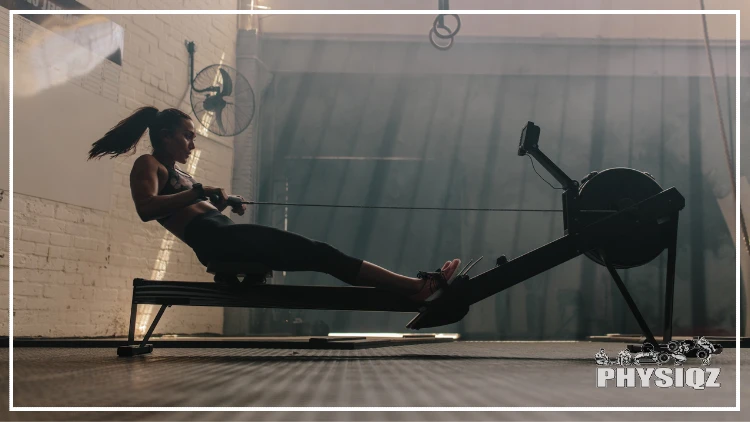
There might be questions with the muscles that work when using a rowing machine.1
In general the muscles worked while rowing include:
- Hamstrings
- Calves
- Quads
- Triceps
- Biceps
- Lats
- Traps
- Rhomboids
- Rear delts
- Abs
Of course, these can be broken down by the phases of the row but what’s more important is that rowing machines can make the gym fun, interesting and provide a full body workout in a short amount of time so don’t worry too much on each particular muscle worked.
Instead, consider if rowing is good for building muscle, if it’s a suitable weight loss exercise, how many calories rowing burns, and the vast benefits of rowing on a machine which is all covered below.
We even throw in some before and after rowing pictures, results, and stories for anyone trying to decide if the rowing machine is right for them!
What Muscles Work When Using a Rowing Machine (By Phase)?
Rowing using rowing machines is an excellent cardio workout and can help build muscles by providing a low impact, simple movement that works out almost 90% of the body’s musculature using up to 9 muscle groups in all phases of the stroke—both muscles of the upper and lower body are targeted when rowing.2
Rowing machines consist of four distinct phases (movements) that are denoted by the position of the person as they engage the row stroke. These are:
- The catch
- The drive
- The finish
- The recovery
The complete movement of the rowing stroke targets lower body muscles such as the glutes and quads while the upper body has the lats and deltoids activated; the core muscles, in particular the abdominal muscles are also targeted.
This dispels the misconception that rowing only engages leg muscles, despite the rower being similar to a horizontal version of deadlifts.
The Row Catch Muscles Worked
The row catch is the first phase of the rowing stroke and occurs when someone is leaning forward towards the front of the machine at a 1 o’clock position where the seat is slid to the most forward position.
Row catch position is attained by bending the knees such that they are close to the chest with shins being vertical to the floor. While in this position, the lats and core are engaged, shoulders in a relaxed position allowing someone to initiate a push off the machine to begin the drive phase.
The row catch phase of the rowing machine movement employs the triceps, leg muscles (hamstrings, calf muscles and glutes) and the back muscles.
Leg Muscles (Hamstrings, Calf Muscles, Glutes)
Muscles of the posterior chain are among the muscles worked by a rowing machine and are used in this phase; they include the glutes, hamstrings and calf muscles which all compress to maintain the shins in a vertical position.
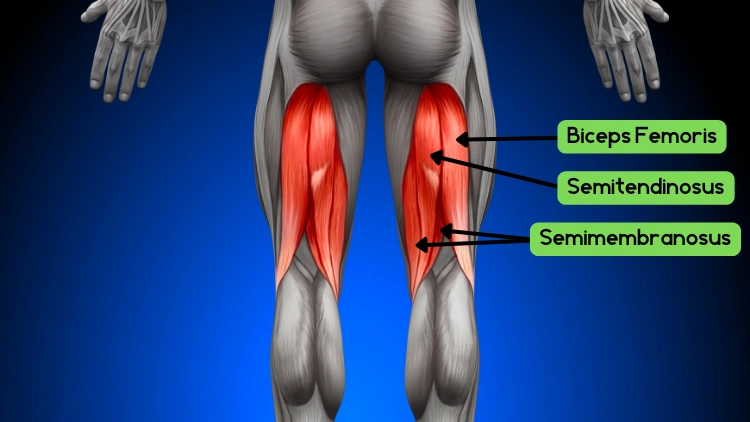
Source: decade3d via Canva.com3
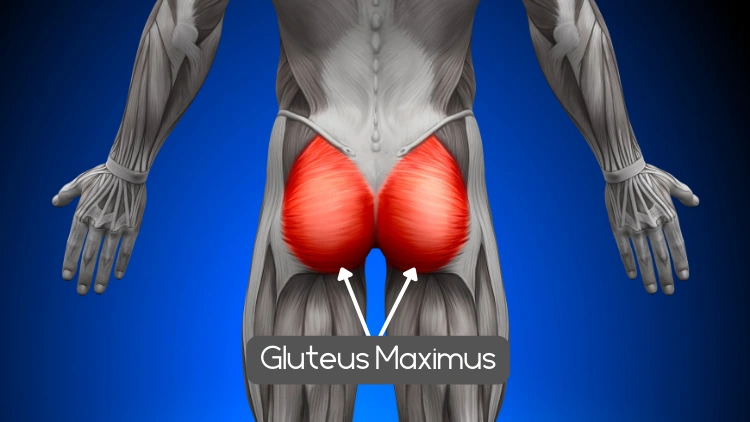
Source: decade3d via Canva.com4
Arm Muscles (Triceps)
The arm muscles are used and in particular the triceps to extend the arms and elbows to allow someone to hold the handle in the initial position.
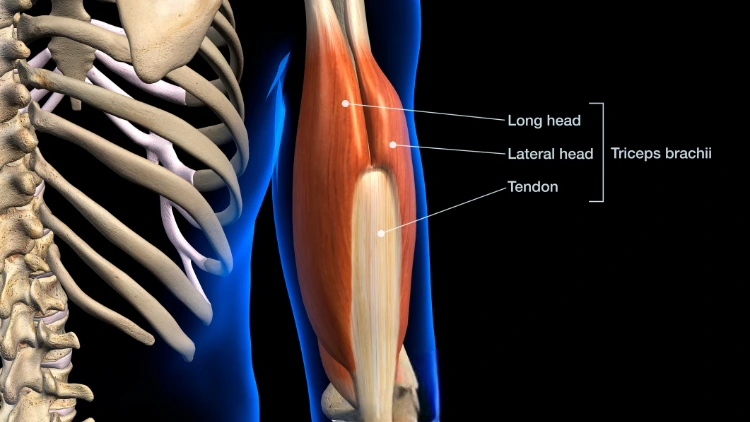
Source: Hank Grebe via Canva.com5
Back Muscles (Lats, Traps, Rhomboids)
The back muscles are some of the muscles used when using a rowing machine—they include the lats, traps and rhomboids and are all engaged during the catch; in particular the lats which control the arm’s extension while the traps maintain control of the shoulder blades.
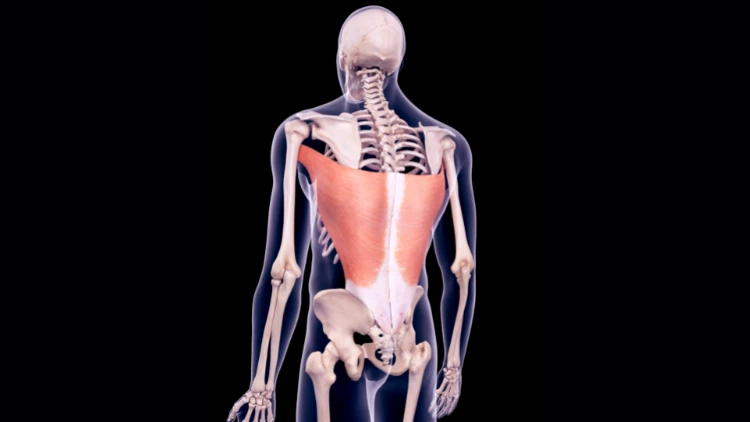
Source: Science Photo Library via Canva.com6
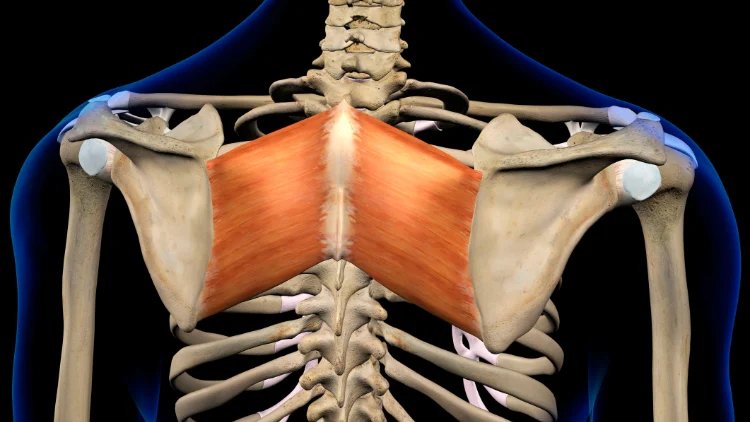
Source: Hank Grebe via Canva.com7
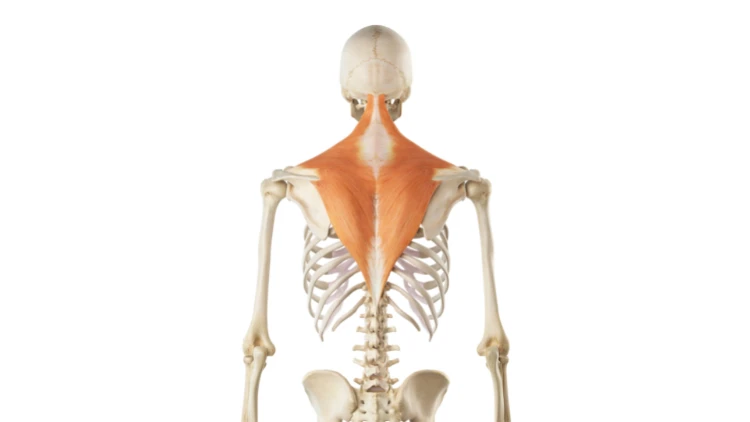
Source: Science Photo Library via Canva.com8
Muscles Used In the Row Drive
Drive phase will involve someone driving and pushing through the feet against the foot stretchers until the legs are almost at full extension.
The core must be fully engaged while using the hip hinge (a movement where the body is bent downwards in half) to yank the torso into a vertical position while pulling the handle bar towards the sternum with all these steps being completed in unified swift motion leading to the finishing phase.
Leg Muscles (Quads, Hamstrings, Glutes)
The quads, glutes and hamstrings are the muscle groups that are the main movers in the drive phase as they contract to extend the hips as the upper body gravitates back into a 45-degree angle.
Shoulder & Arm Muscles (Rear Deltoids, Biceps)
The shoulders (rear deltoids) are pivotal when the legs are driving the body rearwards along the rail and they contract during this movement. As the hands reach the knees, the biceps—often considered among the hardest muscles to grow—contract to pull the handlebar towards the sternum.
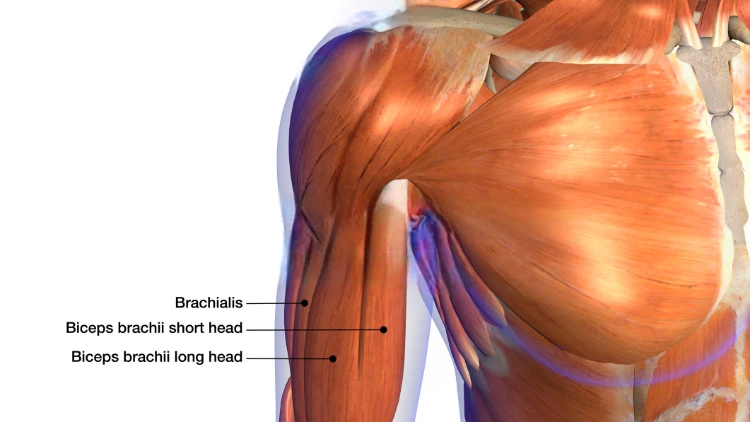
Source: Hank Grebe via Canva.com9
Back Muscles (Upper and Lower)
Both the upper and lower back muscles are rowing machine muscles targeted to work and stabilize the torso’s upright position and are also engaged when the handlebar is pulled towards the sternum.
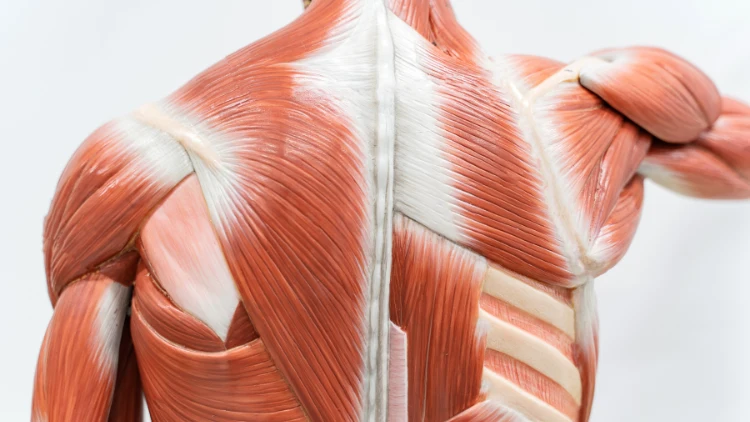
Source: tonaquatic via Canva.com10
Abdominal Muscles (Abs)
When the handle bar is being pulled in towards the sternum the abs must be engaged and contract to ensure that the torso remains stable.
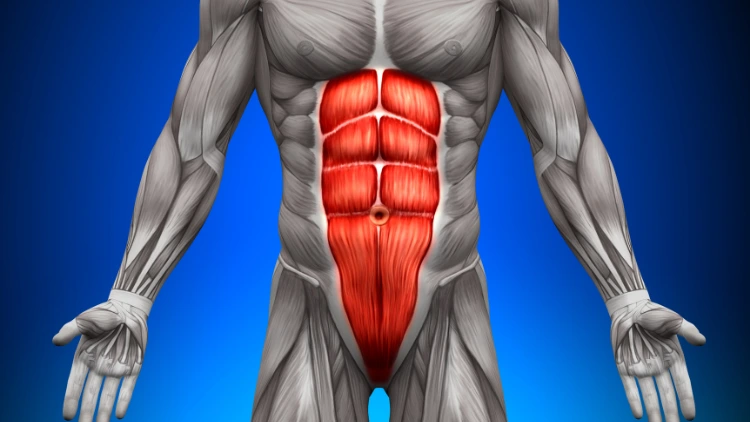
Source: decade3d via Canva.com11
The Finish of the Row & Muscles Worked
The finish phase fully extends the leg by engaging the core to stabilize the body and hinging in a backward motion at the hips. The handles are now brought in fully towards the sternum which will result in the upper arms rotating which will mimic a rowing motion leading to the final phase which is the recovery.
Abdominal Muscles (Rectus Abdominis, Internal Abdominal Oblique, External Abdominal Oblique, Pyramidal, Transverse Abdominis)
All the abdominal or torso muscles aforementioned are heavily engaged during the finishing motion to ensure that the body is stabilized.
Arm Muscles (Biceps)
The biceps which are also worked in pull ups are engaged and contract during the finish phase to help stabilize and give support to the back muscles which in turn allows them to rotate the upper arms.
Recovery Muscles Used
Recovery phase is the final phase and is essentially the last three phases but in reverse which involves relaxing the arms away from the body, hinging towards the 1 o’clock position and then bending the legs back to the catchphrase.
It is important to ensure the handle passes over the knees before bending them and this phase should be 50% of the speed of the drive allowing the muscle recovery and preparation for another drive.
Leg Muscles (Hamstrings, Glutes, Calves)
The glutes, hamstrings and calves all contract during the recovery phrase as someone slides down the rail back to the initial and starting position.
Arm Muscles (Triceps)
During the recovery phase, the triceps are the muscles worked by a seated rowing machine that play a role in extending the arms forward.
Can I Build Muscle by Using a Rowing Machine?
Using rowing machines regularly can help build and tone muscles. They work muscles in the upper body including the biceps, back muscles and lower body muscles such as the glutes, calves and hamstrings.
These muscles will get stronger as a result of resistance placed on them; in this case the resistance from the rowing machines will cause muscles in the legs and arms to grow and become lean—this especially holds true for beginners to workout programs such as beginners powerlifting programs.
Rowing has been shown to significantly increase strength in the upper back, the abdominal muscles and the trunk of the body; by engaging multiple muscle groups, the body is stimulated to produce growth hormones that are key to muscle building.12
In addition, exercises that are low impact such as rowing can help make the bones stronger by making them more dense since pressure is placed on them every time the feet are pushed and the handle is pulled while increasing the skeletal mass surrounding the joints.13
However, if serious muscle building is the goal, then the rowing machine will not be the ideal way to move forward. For a comprehensive strength training program, consider a beginner hypertrophy program. Since rowing is a pulling exercise, cable rows, a compound exercise, are more effective for building muscle in the back and arms.14
They can provide a much higher resistance due to selection of varying weights which allows for progressive overloading and also give the lifter the ability to switch grips to target different parts of the back—the lower body is not however targeted by cable rows.
Are Rowing Machines Good for Weight Loss?
Rowing machines provide an excellent cardio workout and thus, can surely help someone looking to shed weight. Working out using these machines is a proven way to melt fat off the body since they deliver an almost complete body workout as opposed to other machines that target specific muscle groups.15
This makes the use of the rowing machine ideal for those looking to burn calories since a larger number muscle groups are involved in the workout which ensures that the body develops a calorie deficit (where the body is expending more calories than it is consuming) leading to burning through the fat reserves for fueling the working muscles.16
Regular use of a rowing machine can assist with achieving a 1000 calorie deficit, though it is an extreme diet regimen.
How Many Calories Are Burned Using a Rowing Machine?
It is clear that using rowing machines can make calorie burning an efficient process—but the exact calories that are burned depends on a number of factors such as the body size or weight, the type of machine being used and the intensity at which the exercise is being performed.
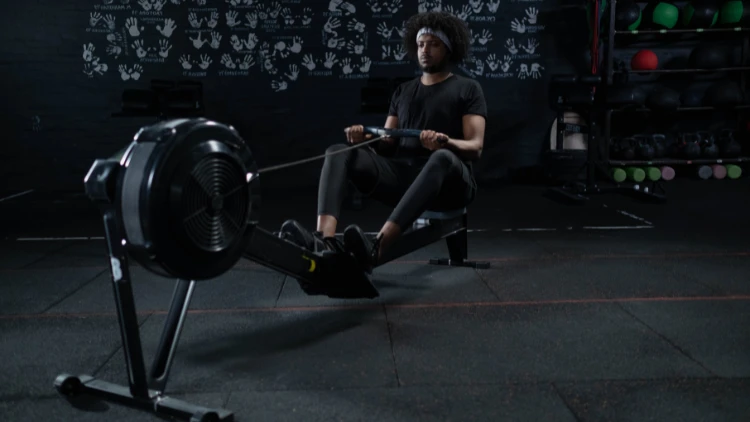
Source: cottonbro via Canva.com17
The actual computation of calories burned is a complex process; however, based on the METS to Calories Calculator provided by Cornell University, an average of 300 kcal can be expected to be burned for 30 minutes of indoor rowing.18
How Long Should I Use a Rowing Machine To Get in Shape & Toned?
How long a fitness enthusiast should use a rower depends on what their fitness goals are; that is whether they are looking to lose weight or build muscle from using the machine.
Weight loss—for those looking to achieve weight loss, consistency is key and using the rower up to 6 times a week or at least 3 times a week for a minimum 30 minute session. It is imperative to take rest days to allow the body to recover and this holds especially true for those new to the machine.
Build muscle—as with fat loss, being consistent will help grow muscles in both the upper and lower body. The enthusiast should also use the rower for 30 minute intervals for at least 4 weeks to start seeing results.
Before & After Rowing Machine: Muscles Results & Weight Loss Pictures
These are the before and after pics of individuals who chose the rowing machine as a way to lose fat and build muscle showing visually the benefits that regularly using a rowing machine brings.
Billy Brendan’s Rowing Machine Transformation
Billy chose the rowing machine as a vehicle to achieve weight loss and targeted using the machine for 30 days spending 30 minutes using the machine. Initially, he was not as strong when using the machine, but he soon got vigorous and energized as time went along in the workout.
He also was working a real sweat due to the increased intensity obviously as a result of being stronger.
He started the challenge weighing 238 lbs. and had a body fat percentage of 31%. When completed the challenge 30 days later he was down to 214 lbs. losing an incredible 24 lbs. and reduced his body fat percentage to 26.9%.
After the challenge, Billy clearly had lost body fat in his midsection and arms—he also had better toned arms with his triceps being more pronounced and had better definition in his chest.
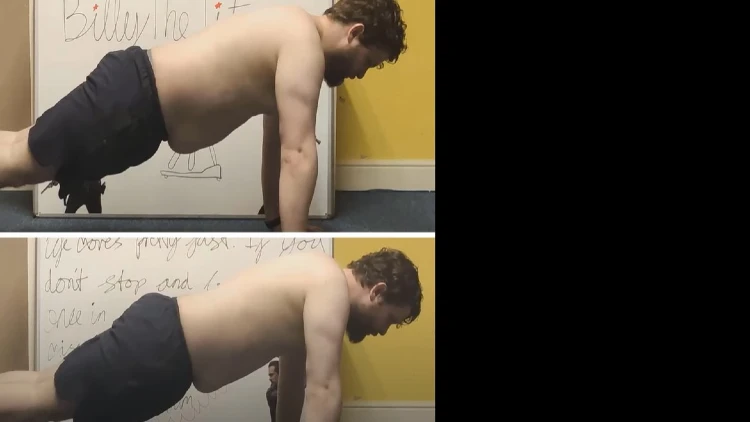
Source: Billy Brendan on Youtube19

Billy transformed into a new person with increased energy, a slimmer figure, and impressive reductions in weight, body fat percentage, and noticeable improvements in muscle tone, particularly in his midsection and arms. Source: Billy Brendan on Youtube19
Aries Weight Loss Progress Using the Rowing Machine
Aries embarked on a rowing routine of rowing for at least 20 minutes a day for a month to lose weight.
She had reached a point where she had to take drastic measures herself to achieve her goals and followed coach-led classes on the Echelon Row App, attending a variety of the classes she took to allow herself to constantly be challenged since rowing for a month can get monotonous.
Rowing was very challenging with high intensity with the legs constantly getting sore and she was forced to reduce the intensity on some days due to pain. Aries would therefore ‘coast’ on some days going low distances to get some form of recovery.
However, even during the lower intensity, she would still work a sweat and felt accomplished after the exercise.
When Aries first started the challenge, she weighed in at 228.5 lbs. and after 30 days, she came in at 220.7 lbs.
She had expected better weight outcomes but came to understand that the scale doesn’t matter. She noticed improvement in her midsection and recognized that dedication and effort yield results over time.
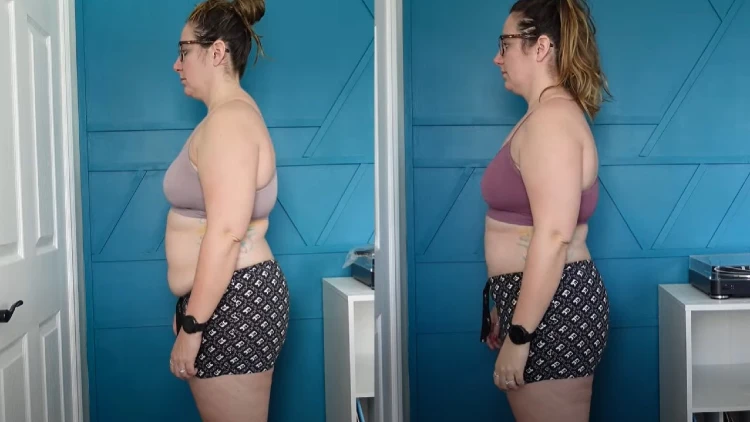
Aries successfully lost weight and improved her body composition through a dedicated month-long rowing routine. Source: Aries Shrinks on Youtube20
10 Rowing Machine Benefits
Rowing machines provide a myriad of health benefits which include weight loss, muscle growth, enhances posture, they are a low impact workout and build strength and endurance. A detailed description can be found below.
1. Burns Calories & Promotes Weight Loss
Rowing is an excellent way to burn calories since most of the muscles in the body are utilized which in turn lead to larger calorie burn. Even when the session is done, someone is still able to burn more calories due to a process known as excess post-exercise oxygen consumption (EPOC).
During EPOC, the body enters a recovery phase where it replenishes resources expended during intense exercise, such as restoring fuel reserves, repairing cells, and promoting anabolism. This calorie-burning process contributes to weight loss, making rowing an ideal addition to weight loss solutions.21
2. Builds Muscle & Full Body Workout
Rowing can help individuals build some muscle and also tone their physiques.
They target muscles of both the upper and lower body, and while rowing cannot be fully relied on as a raw muscle building exercise due to lower resistance and less repetitions, it may be combined with other strength training programs to induce muscle growth.
It is a full body workout that engages a majority of the body’s musculature including both the upper and lower body. As a result, this exercise is superior to the other cardio workouts such as running, using the elliptical machine or cycling in terms of the number of muscles that are engaged.
The ratio of power that is developed between upper and lower body is 40% of power coming from the upper body and the rest, 60% coming from the lower body.
3. Improves Posture
This exercise works and engages the muscles of the posterior chain including the glutes, hamstrings, calves and abdominals. These muscles end up becoming stronger which serve to improve posture and gait of someone who is always rowing.
4. Meditative
Rowing outdoors in a boat can place the body in a meditative state due to emphasizing a mind-body connection, but this can still be achieved when on a rowing machine. This is a result of the gliding motion and its repetitive nature that causes the mind to go into autopilot.
Rowing also produces endorphins which are feel good hormones that help alleviate stress.
5. Low Impact
This exercise is a low impact workout which means that it is easy on the joints by putting less stress on them.
Since rowers can control their movement and pace, rowing is the perfect exercise for those in recovery and is usually a recommended exercise for individuals who are at the onset of osteoarthritis (a common form of arthritis where the cartilage that cushions the ends of bones at the joints wears down).
Individuals who used the rowing machine over a period of 8 weeks were found to have improved joint torques (rotations) in the knee, shoulder, elbow and lumbar by 30%.22
The same cannot be said for high impact exercises that are not easy on the joints such as running and plyometric exercises (these use force and speeds of different exercises to increase muscle power).
6. Universal Exercise
People of all ages and fitness levels can use the rowing machine—it has even been deemed safe for use by the blind.
A study conducted in 2015, showed that individuals who are visually impaired or who suffered low vision and were rowing for 5 days a week for 6 weeks registered a decrease in body fat percentage, body mass, had reduced cholesterol levels and had increased back strength with their trunks having greater flexion.12
If blind people can use a rowing machine, so can old people and the young who often spend a lot of time slouching on sofas watching T.V.
7. Excellent for Cardiovascular & Respiratory Systems
Rowing is a cardiovascular oriented (aerobic) exercise and has been shown to boost heart health reducing the risk for heart disease and heart attack as opposed to a sedentary life that contributes to these diseases.23
Rowing is an intensive workout that demands the heart to work hard to transport blood to muscles which in turn makes the heart stronger.
The lungs are also recruited heavily due to the higher demands for oxygen to fuel the workout where breathing increases from 15 times a minute to up to 60 times a minute.24 This makes the lungs healthy creating a large breathing reserve which ensures someone is never short of breath when doing regular activities.
8. An Alternative to the Other Exercises
The elliptical and treadmill are seldom neglected by gym enthusiasts—it is rare to see either of these machines empty when visiting a gym, with many choosing to overlook the rowing machine.
The rowing machine is better than the treadmill because it engages the upper body and is also better than elliptical because it offers a more intense exercise.
9. Home Friendly
A rowing machine is a much better machine to have when living in a condo or apartment because they are quieter when being used. They are cheaper and can easily be folded up when not in use to save space.
Rowing machines are convenient for home use and can be utilized at any time for the optimal exercise timing to reduce belly fat.
10. An Efficient Exercise
In today’s modern world with many people having busy work and family schedules, rowing provides a convenient exercise to help fitness enthusiasts reach their goals with the recommended 30 minutes daily.
Rowing can provide intense exercise in short bursts similar to high intensity interval training (HIIT) which is short bursts of intense training and short recovery periods. This makes rowing the perfect workout addition to sneak in into a busy schedule.
How To Use Rowing Machines for HIIT Workouts + Rowing Machine Workout Program
High intensity interval training (HIIT) enhances the rowing machine workout into an effective and efficient calorie burning exercise. HIIT as mentioned briefly combines short bursts of exercise and short resting or recovery periods cutting that time it takes to exercise in an hour to 30 minutes which is ideal for a time sensitive world.25
All in all, it is effective at increasing strength, stamina or endurance and decreasing body fat.
Rowing Machine Workout Program
The following cardio/HIIT routine should be used to make the most out of the rowing machine while taking the time out of hectic schedules:
- Commence rowing with a 2 minute warm up; thirty seconds before the 2 minutes are done, build up intensity such that someone is at full intensity at the 2 minute mark.
- Row for 20 seconds with the highest intensity that can be mustered.
- After 20 seconds, stop rowing and rest for 10 seconds.
- Continue this cycle of high intensity rowing and resting for 8 rounds.
- Complete the HIIT workout with a 2 minute cool down with medium intensity.
This program should be done thrice a week on alternating days to allow for rest.
The entire workout lasts for 8 minutes. If done with the recommended intensity, it will leave you feeling completely spent and burning plenty of calories in a short time. This leaves no excuse for not achieving a calorie deficit without exercise.
Fitness enthusiasts often pass by rowing machines without knowing what muscles work when it is used. However, by understanding the benefits that the upper and lower body could gain from this machine and seeing the before and after pics, everyone serious about their fitness goals should include this amazing machine in their regimen.
Frequently Asked Questions
What Muscles Does a Rowing Machine Work If Done Incorrectly?
Rowing should not make the neck and back sore and if they do, it is an indication that rowing is being done incorrectly either because the shoulders are being hunched forward instead of being kept back and retracted. Another reason is that the core is not being engaged, which will lead to over compensation from the back.
What Muscles Does Rowing Work If Done on a Boat? What Muscles Do Rowers Work?
Rowing on a boat just like on a machine works the lower and middle back, the calves, biceps, glutes and hamstrings.
References
1Lund, Jacob. Canva, 16 November 2008. Accessed 20 April 2023. <https://www.canva.com/photos/MACySJrI1DE-woman-doing-cardio-workout-on-rowing-machine/>
2Stephen A Ingham, H. C. (2008, March). Physiological and performance effects of low- versus mixed-intensity rowing training. Retrieved 2022, from <https://pubmed.ncbi.nlm.nih.gov/18379224/>
3decade3d. Canva. Accessed 20 April 2023. <https://www.canva.com/photos/MADerMxdfBI-hamstrings-anatomy-muscles/>
4decade3d. Canva. Accessed 20 April 2023. <https://www.canva.com/photos/MADerAJvWMU-gluteus-maximus-anatomy-muscles/>
5Grebe, Hank. Canva. Accessed 20 April 2023. <https://www.canva.com/photos/MAEJnzTxmJU-labeled-anatomy-chart-of-shoulder-elbow-and-triceps-muscles-in-skeleton-on-black-background/>
6Science Photo Library. Canva. Accessed 20 April 2023. <https://www.canva.com/photos/MADq3vbyn-k-f017-1255/>
7Grebe, Hank. Canva. Accessed 20 April 2023. <https://www.canva.com/photos/MAD9YMm5tt4-male-rhomboid-major-back-muscles-in-isolation-on-skeleton/>
8Science Photo Library. Canva. Accessed 20 April 2023. <https://www.canva.com/photos/MADmTLHptgU--human-trapezius-muscles/>
9Grebe, Hank. Canva, 29 July 2022. Accessed 20 April 2023. <https://www.canva.com/photos/MADZASGJL7w-labeled-anatomy-chart-of-neck-and-shoulder-muscles-on-white-background/>
10tonaquatic. Canva, 29 July 2022. Accessed 20 April 2023. <https://www.canva.com/photos/MADKZXi5XqU-muscles-of-the-back-model-for-physiology-education-/>
11decade3d. Canva. Accessed 20 April 2023. <https://www.canva.com/photos/MADerFwn3js-abs-anatomy-muscles/>
12Ka-Young Shin, E.-H. C.-Y.-R.-H. (2015, August 25). Effects of Indoor Rowing Exercise on the Body Composition and the Scoliosis of Visually Impaired People: A Preliminary Study. Retrieved 2022, from <https://www.ncbi.nlm.nih.gov/pmc/articles/PMC4564707/#>
13W M Kohrt, E. S. (1997, August). Effects of exercise involving predominantly either joint-reaction or ground-reaction forces on bone mineral density in older women. Retrieved 2022, from <https://pubmed.ncbi.nlm.nih.gov/9258756/>
14Silvio Lorenzetti, R. D. (2017, September 19). Pulling Exercises for Strength Training and Rehabilitation: Movements and Loading Conditions. Retrieved 2022, from <https://doi.org/10.3390/jfmk2030033>
15School, H. H. (2012, January 31). Retrieved 2022, from <https://www.health.harvard.edu/healthbeat/tips-for-choosing-the-right-exercise-equipment>
16Adriana Mika, F. M. (2019, January 28). Effect of Exercise on Fatty Acid Metabolism and Adipokine Secretion in Adipose Tissue. Retrieved 2022, from <https://www.ncbi.nlm.nih.gov/pmc/articles/PMC6360148/>
17cottonbro. Canva. Accessed 20 April 2023. <https://www.canva.com/photos/MAEdAj_rO1c-man-in-black-activewear-using-a-rowing-machine/>
18University, C. (2022). METS to Calories Calculator. Retrieved 2022, from <https://ergo.human.cornell.edu/MetsCaloriesCalculator/MetsCaloriesCalculator.htm>
19Billy Brendan. “Rowing Every Day For 30 Days (Weight Loss Time Lapse).” YouTube, 19 June 2020, Accessed 31 March 2023. <https://www.youtube.com/watch?v=EXXUzyw_CJ4>
20Aries Shrinks. “Rowing Every Day For 30 Days. Results. At Least 20min A Day.” YouTube, 28 March 2022, Accessed 31 March 2023. <https://www.youtube.com/watch?v=lxv-QzxcLvM>
21Jeff M. Reynolds, L. K. (2022). Resistance Training and EPOC . Retrieved 2022, from <https://www.unm.edu/~lkravitz/Article%20folder/epoc.html>
22Seung Rok Kang, C. H. (2014). Comparative analysis of basal physical fitness and muscle function in relation to muscle balance pattern using rowing machines. Retrieved 2022, from <https://pubmed.ncbi.nlm.nih.gov/25226943/>
23Matthew A. Nystoriak, A. B. (2018, September 28). Cardiovascular Effects and Benefits of Exercise. Retrieved 2022, from <https://www.ncbi.nlm.nih.gov/pmc/articles/PMC6172294/>
24Society, E. R. (2016, March). Your lungs and exercise. Retrieved 2022, from <https://www.ncbi.nlm.nih.gov/pmc/articles/PMC4818249/>
25Health, H. T. (2022). HIIT (High Intensity Interval Training). Retrieved 2022, from <https://www.hsph.harvard.edu/nutritionsource/high-intensity-interval-training/>